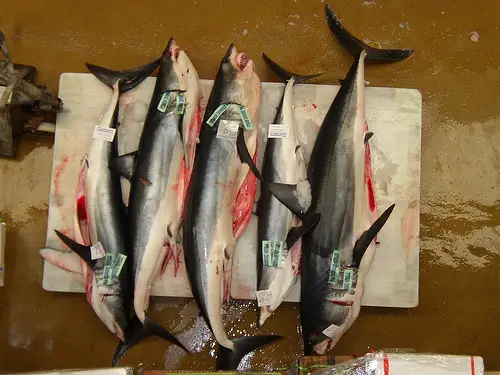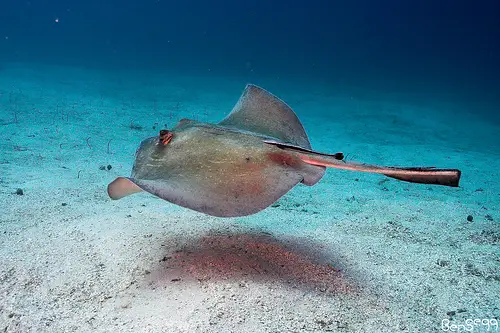Blue Marlin
The Blue marlin is a strikingly lovely fish, the largest of the Atlantic Marlin as well as being one of the largest actual fish in the world, with the female, who is much larger than the male, reaching about 14 feet long and weighing in about 1900 pounds, nearly a ton. The average for these gigantic beauties is about 11 feet and 400 pounds.

The blue Marlin, jumps cleanly from the water
Blue Marlin are native to the tropics and subtropics of the Atlantic, Pacific as well as the Indian Ocean and are easily the most recognized of all fish with their distinctive long upper jaw that is spear shaped, and quite lethal.
They are a deep cobalt blue with silver white on their bellies and a very distinct dorsal fin as well.
Marlin are known as blue water fish, because they spend most of their lives far out to sea, following the ocean currents for many thousands of miles, being migratory in nature.
The Blue Marlin prefers the high temperatures of the surface water, and feed primarily on tuna and mackerel, but will also dive very deeply to eat another favorite food, squid.
The marlin is among the fastest fish in the ocean, and they will use their spear to slash and dice their way through a dense school of their chosen prey, then turn and come back to eat the stunned and wounded fish.
They are excellent prey for humans, known to put up an amazing fight when they are hooked, which makes them, something of a holy grail for the sport fisherman.
The Japanese consider their meat to be a high delicacy, served raw and called sashimi. They are not currently endangered however there is some concern that unless they are fished in a sustainable way the Atlantic Marlin may in time sustain some hurt from the fishermen.
The Atlantic Marlin reaches maturity at between two and four years and will then begin to breed, with most breeding taking place from spring to fall.
The Female Blue Marlin will spawn sometimes four times in one season. She will then release sometimes as many as seven million eggs.
And you thought two kids was tough to handle!!Females may spawn as many as four times in one season.
The planktonic young are about 1 millimeter long when born, but will grow as much as 16 mm a day, achieving full growth in about 2 years. The males will live in the wild about 18 years while there are recorded females who have lived to be about 30 years old.



If you’d like to catch and release a majestic Blue Marlin go to http://www.FishPanamaToday.com